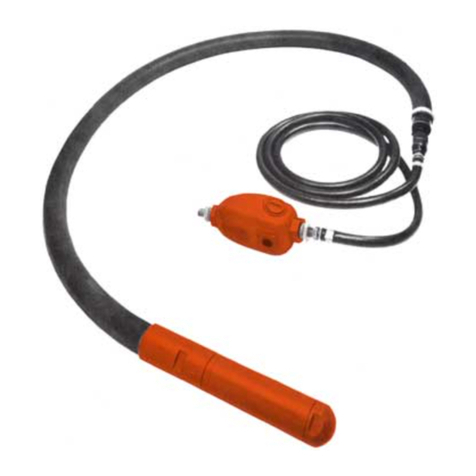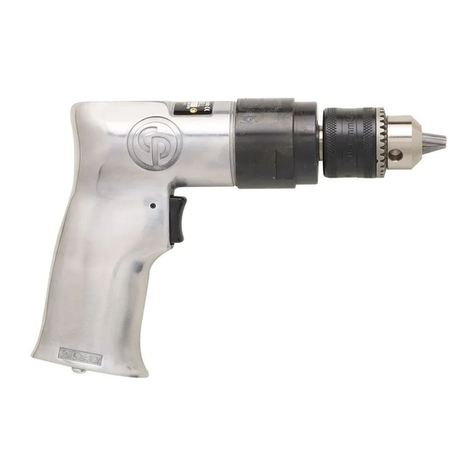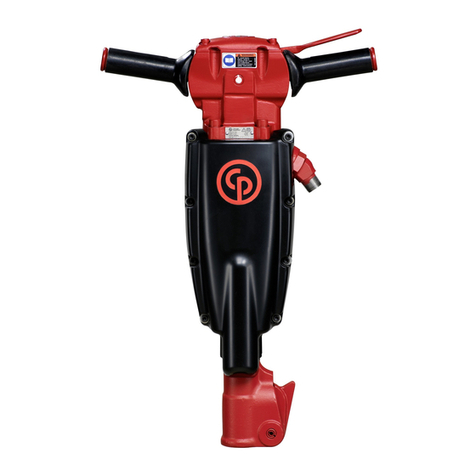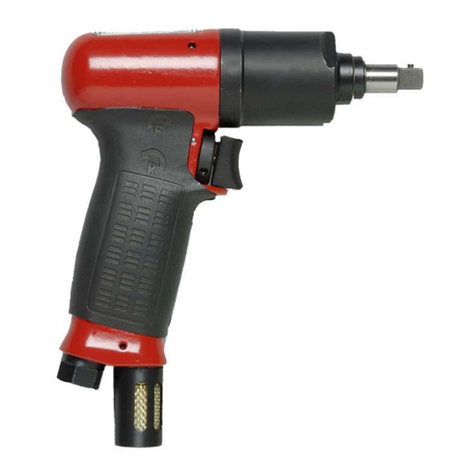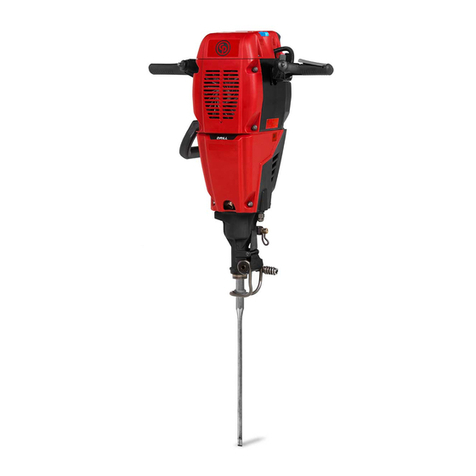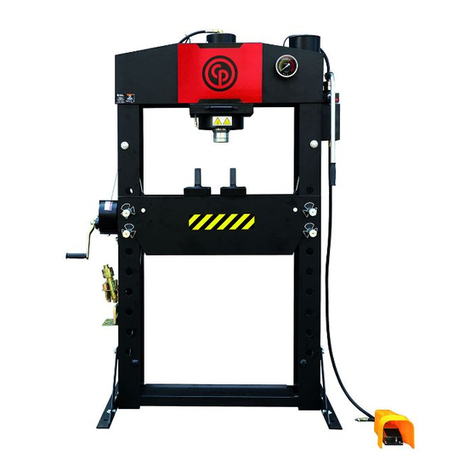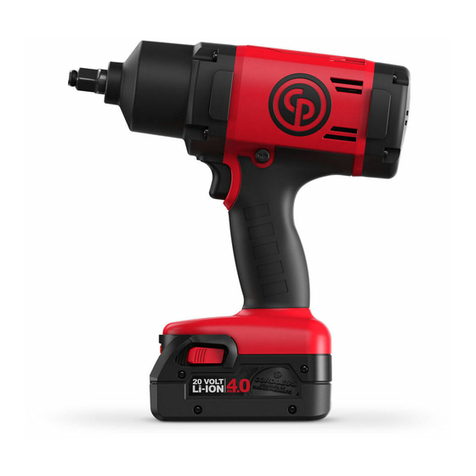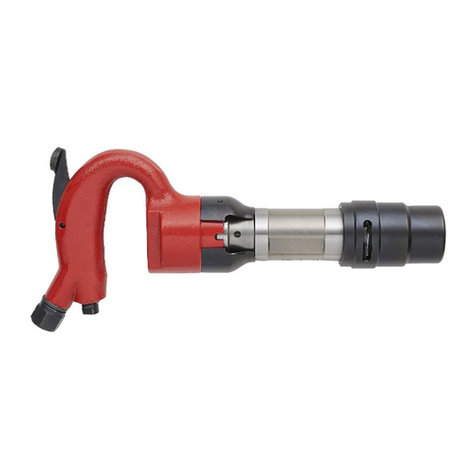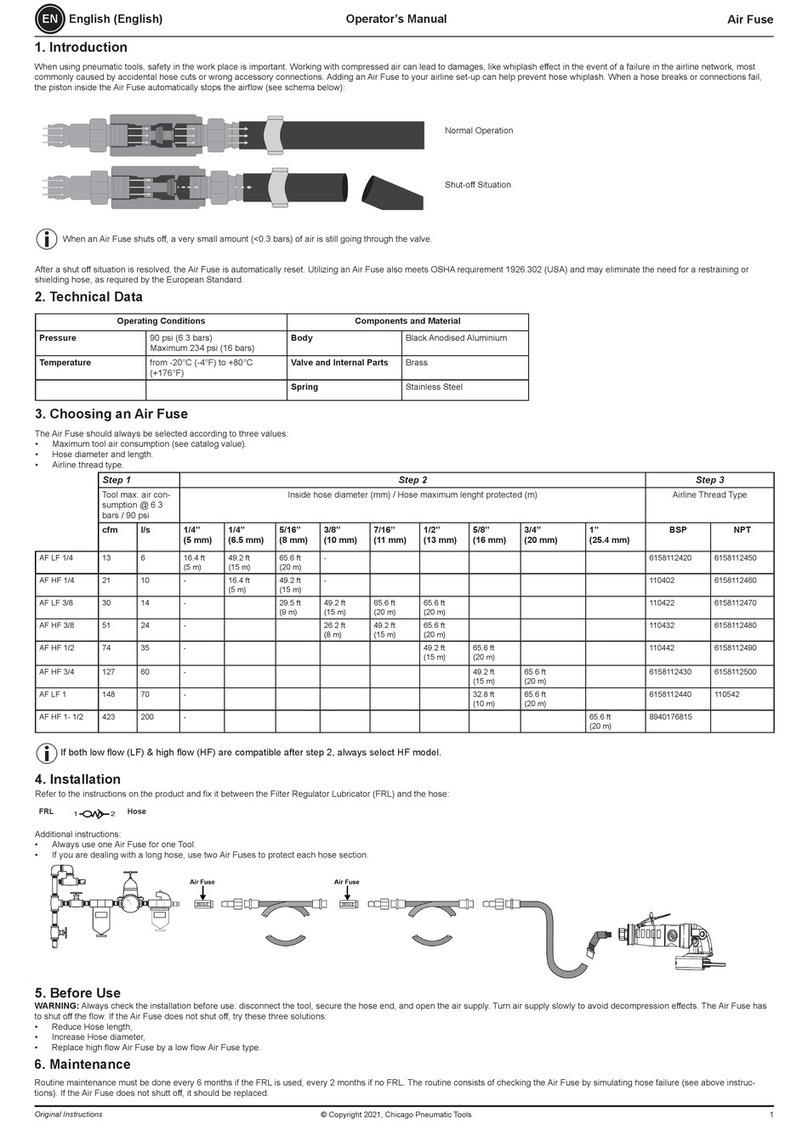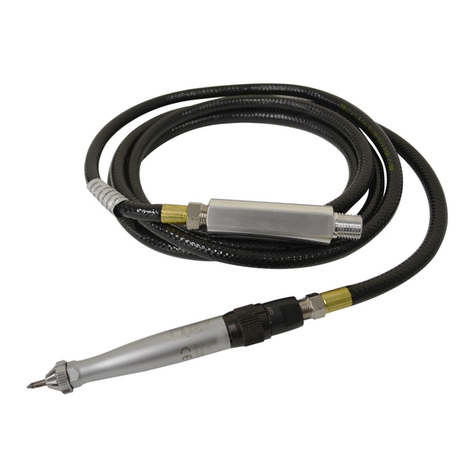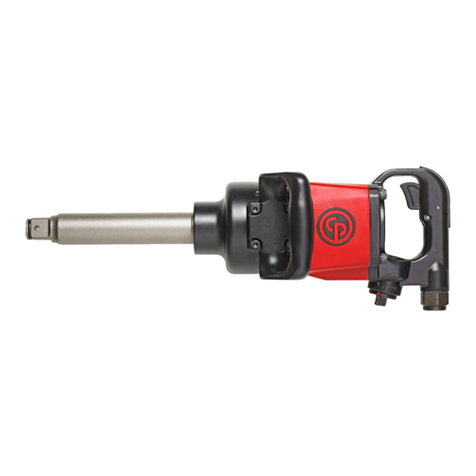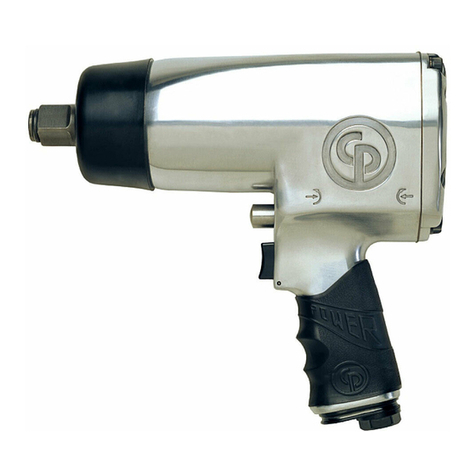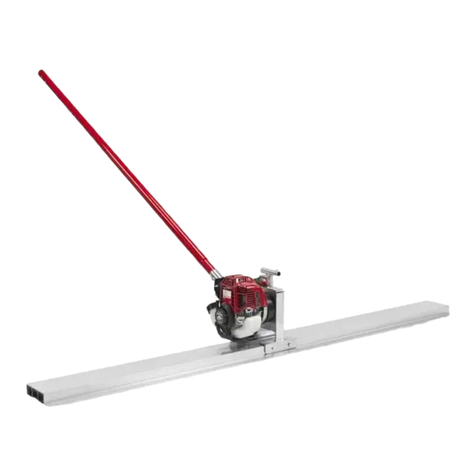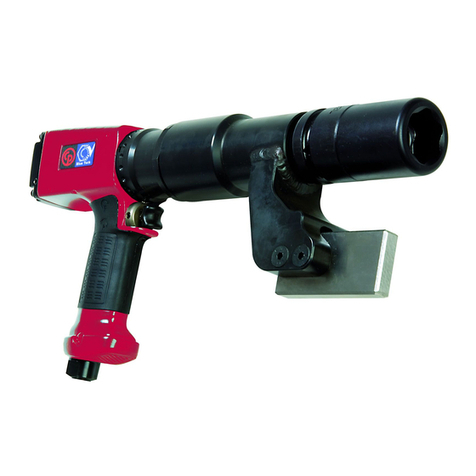CP 4131
10
Lack of lubrication is the chief cause of wear and
consequent loss of power. Watch for oil on Chisel shank
and air exhaust ports. Excess oil leads to carbon deposits
on piston and cylinder causing wear.
A tool in constant use should be dismantled, cleaned and
inspected at least weekly. Worn parts should be replaced
to maintain operating efficiency and avoid high upkeep
costs.
Check the tool after disassembly for plugged air porting
and for worn parts. As the parts of the tool wear, power will
slowly decrease. Depending on the requirements of the
particular application tolerable wear can vary. As a guide in
maintaining maximum power output, parts listed in the
following table should not be worn in excess of the given
dimensions.
Clamp ring should be replaced if it appears torn or flaked.
Replace clamp ring if cylinder rotates relative to the flange
when turned by both hands after assembly. Replace piston
if cracked or worn hollow on striking end. Valve seats and
edges of valve should be inspected visually for wear and
pitting. In case of throttle valve leakage, replace the O-ring
on the throttle valve with a new one. Replace the “O” Ring
on the Handle if it is torn.
Assembly cautions: With the Bumper and washer in place,
assemble flange against handle by tightening the four bolts
evenly till the gap between the flange and the handle
disappears. As a guide, use approximately 15-18 ft-lb.
torque on the bolts. Recheck the torque on all bolts after
the tightening sequence to ensure that all bolts are
properly torqued. Also, replace Bumper if compression
takes a set at ¼” thickness (total height) or if bumper
appears to be cracked.
Fault
Tool does not start
Loss of power
Maintenance
Trouble shooting
Maintenance
Check if the Air line connections, hoses are connected to
the Compressor. Check if the valves are open. Check
whether the compressor is delivering adequate pressure.
If the above are in order, one or more of the internal parts
may be jammed. In such cases please contact the nearest
authorized Chicago Pneumatic workshop.
Check adequacy of the compressor, air pressure and
delivery from the compressor. For rated performance 90
psig (6.2 bar) air pressure at the tool is required with the
tool operating on the job. Check the presence of oil at the
chisel shank and exhaust. If absent , check the oiler,
whether it is empty or clogged. Check if the hoses are of
proper size, without leaks and kinks. Check if the chisel is
not excessively worn out. Check the tip of the chisel if it has
become blunt or broken. If the above are in order, one or
more of the parts viz. piston, cylinder may be worn out. In
such cases please contact nearest authorized Chicago
Pneumatic workshop.
Scrapping and
waste disposal
Used and worn-out Machines must be treated and
disposed off in such a way that the greatest possible part of
the material can be recycled and the influence on the
environment is kept as low as possible.
Part Maximum Part Maximum
ID (in.) OD (in.)
Cylinder (22) 1.127” Piston (21) 1.1220”
Sleeve (23) 0.6910”
